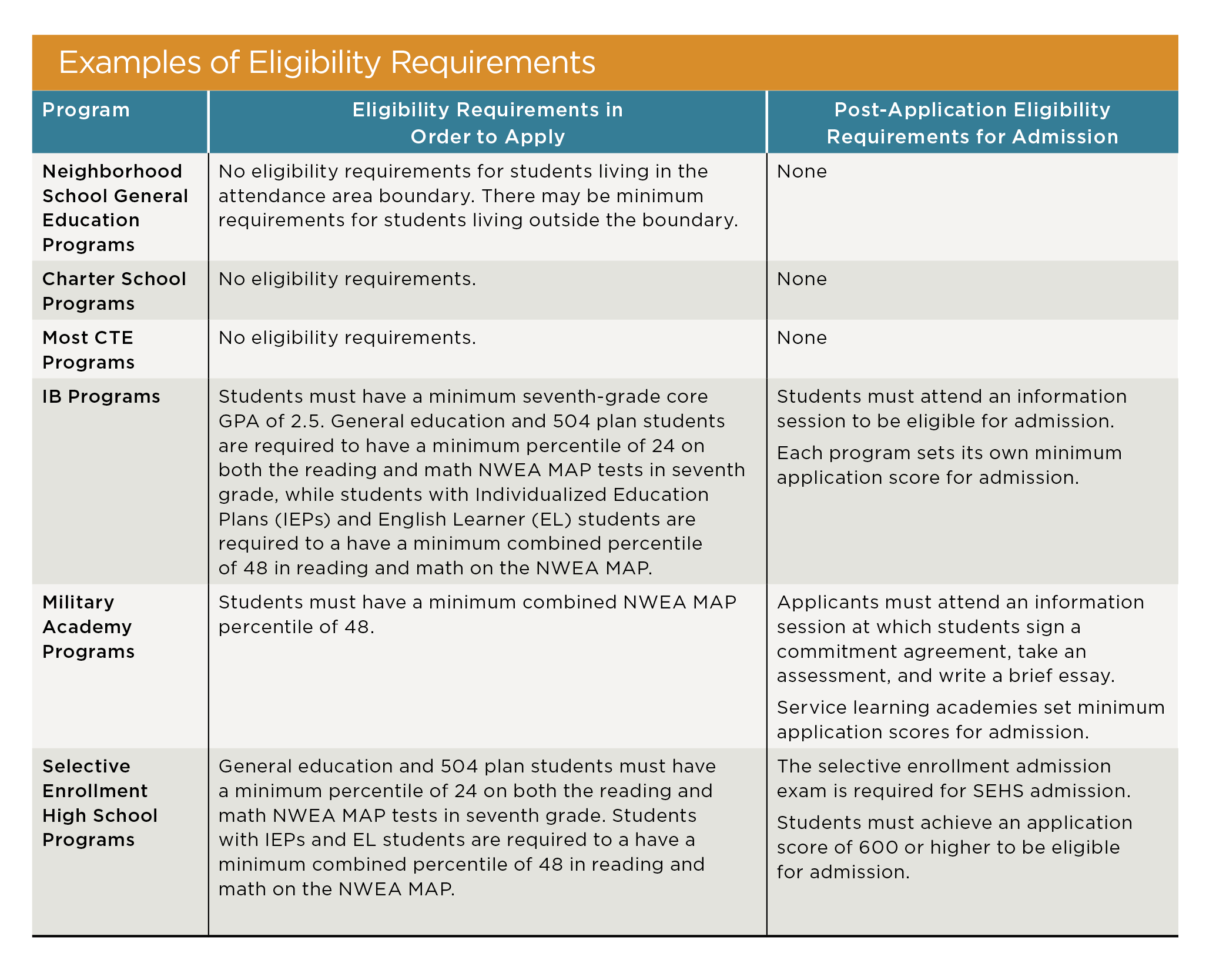1. Who used GoCPS to apply to high schools?
2. What were the programs students applied to most?
3. Did students receive offers from the programs they ranked at the top of their application? Were some student subgroups more or less likely to apply or more or less likely to get top offers?
4. Did the process of assigning offers to applicants work as Chicago Public Schools (CPS) described?
5. Were there major shifts in enrollment—both in terms of total numbers and student demographics—by school type or for individual schools? Did students enroll in the schools where they accepted offers?
In April 2017, the Chicago Board of Education adopted a common application for all high school choice programs, including charter schools, with one deadline and a single best offer. GoCPS, CPS’s online hub for exploring and applying to high schools, launched in the fall of 2017. This report, written with the Federal Reserve Bank of Chicago, analyzes the first year of GoCPS implementation for students who enrolled in ninth grade in the fall of 2018.
Key Findings: Applications and Offers
- Engagement with the GoCPS platform was high. Almost all CPS eighth-graders (93 percent) used GoCPS to apply to high school.
- Students were offered seats according to the process described on the GoCPS website—lotteries admitted students at random and points-based programs admitted the highest scoring
students first. - Almost all applicants received an offer, and most applicants (81 percent) received an offer from a school ranked in the top three on their application.
- Applicants who did not receive an offer to any choice program applied to fewer programs on average and tended to be enrolled outside of CPS for eighth grade.
- Students living in lower-income neighborhoods and Black students applied to more schools, on average, compared to other students, but were less likely to rank a highly rated school at the top of their application. School quality ratings are determined by the CPS School Quality Rating Policy.
- More than one-half of students applied to a program with additional requirements beyond the GoCPS application, such as attending an information session or auditioning. However, less than half of the applicants who applied to these programs completed the additional requirements, making most applicants ineligible to receive an offer from those programs.
Key Findings: Enrollment
- GoCPS did not result in major changes in enrollment patterns.
- Student enrollment at different types of schools (e.g., charter, neighborhood, selective enrollment high schools) remained very similar before and one year after the launch of GoCPS. Overall, neighborhood schools experienced a very slight enrollment increase.
- Most GoCPS applicants enrolled in the high school where they accepted their offer.
- Differences in enrollment patterns by race/ethnicity that existed prior to the adoption of GoCPS persisted. For example, students living in lower-income neighborhoods and Black students were less likely than other students to be enrolled in schools designated as highly rated according to the CPS School Quality Rating Policy.
Research Takeaways for Students and Families
- Rank schools in order of most preferred. The GoCPS selection process considers students for programs in the order ranked.
- Rank all the programs of interest. Students who ranked more programs were more likely to receive an offer. Students may rank up to 20 programs and six selective enrollment high schools.
- Accept the offer before the deadline. Students must accept offers by the deadline, or the offer is considered declined.
- Complete all program application requirements. Some programs have additional requirements for offers, such as attending an information session. If a student does not attend the session, they are ineligible to receive an offer.



